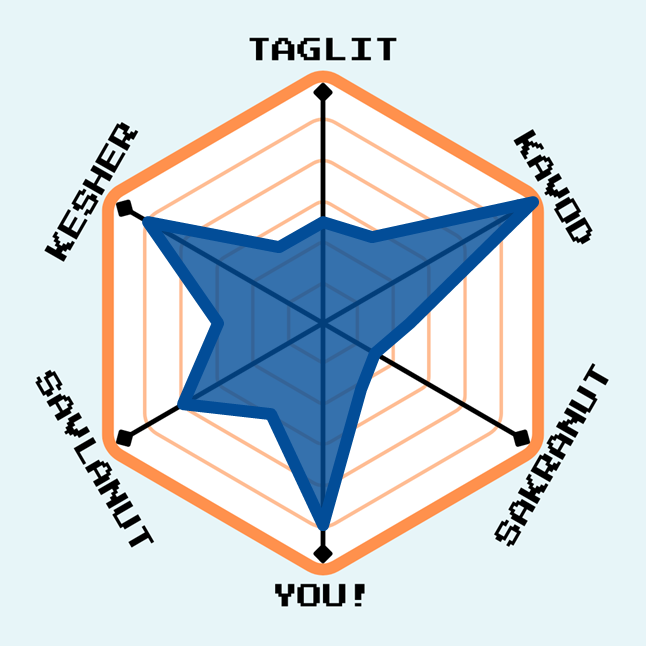
Review written by Troy Mundschenk
November’s pick for the Sci-Tech Game Club was Donut County! See below for the official Sci-Tech review of this 2018 classic by Ben Esposito. To learn more about the Sci-Tech Game Club, go to www.6PointsSciTech.org/GameClub/. Our December game will be CELESTE, a game so popular that we needed two different twitch streams to cover it properly! Join us at www.twitch.tv/6PointsSciTech on December 5th for Part 1 and December 12th for Part 2!
Introduction
Donut County is a charming physics puzzle game about a raccoon with an all-consuming hole wreaking havoc on a town. You play as the rascally raccoon, BK, driving the hole through a variety of locales, sucking up everything you can in your path (alongside most of the population). By the end of the game, the town has been almost completely consumed by holes, and the raccoon has to deal with the consequences of his choices and try to make it up to the community.
We will walk through each of the Sci-Tech values and how Donut County stacks up to the standards we’re holding Game Club games to. To assess this, we pulled on three different sources! Troy Mundschenk, our Game Design Instructor, Isaac Berman, a camper alum and previous Game Design Instructor, and the opinions of our community (including the Sci-Tech Director team). We rated the game on a scale of 0-6 for each value, with 0 being the lowest end of the scale and 6 being the highest end of the scale. Here we go!

Troy’s Review

Isaac’s Review

Community Aggregate Review
Kavod – How well does the game help you succeed?
Kavod (Respect) was our most varied value by far, with very different perspectives highlighting some strengths and weaknesses of the game.
One common thought was that the game does little to help the player figure out mechanics. There are no tutorials, hint systems, or stated objectives. It can be difficult to tell what the game expects you to do, and it requires experimentation to figure out. While the game’s focus on trial-and-error leads to another value we’ll discuss later, not having any way to support players who struggle with the puzzles hurt this game’s kavod score for some of us.
Another interesting concept we saw while reading your responses was that the game’s narrative is inherently about DISrespect! To quote one reviewer, “you just take and take and take.” Since Donut County is about a mischievous raccoon destroying the homes and lives of his neighbors for his own self-interest, we agree that this was another way the game did a poor job of demonstrating respect.
At the end of the game, BK’s growth as a character is pretty stunted and he doesn’t seem to learn much from his actions. Other than that, what he did to the town wasn’t entirely positive, but it does open up an interesting conversation about respect in play. How do we engage with a game that asks us to do disrespectful things via really cute and fun gameplay?
While you’re thinking about that, we’re going to begin discussing our next value.
Kesher – How well does the game help you build or reflect on your relationships with others/yourself?
Being an entirely single-player game, Donut County had a rough start in the kesher (connection) department. How can you build relationships with others if you’re playing by yourself? Well, this game showcases community in a completely different way that many of us found meaningful.
The game’s levels are actually flashbacks, and in between each flashback, we are taken to the scene playing out in the present below the town after the events of the game. All the citizens are sitting in a giant pit around a campfire after being swallowed by the donut holes and are now telling stories about what they had been doing until then.
This environment of shared experience is a nice way to build relationships within a community, and Donut County demonstrates the power of these interpersonal moments by shaping BK’s character towards the end of the story. Though his change is played for laughs, he does learn more about his peers and their hardships through this time of open discussion.
Taking time to listen to the needs and troubles of our peers makes us better and stronger in our ability to care for them. Mira uses these campfire chats to slowly teach BK a semblance of empathy, which leads to him choosing to side with the denizens of Donut County rather than his pickle-jar beleaguered boss.
Mira’s patience in dealing with BK’s antics allows him an opportunity to develop his ability to connect with others, and the game demonstrates the benefits of patience in other ways, also. Speaking of patience…
Savlanut – How well does the game encourage you to take your time?
This game does amazing things in service of savlanut (patience). All the way up to the end, there is no sense of urgency whatsoever. In the narrative, the gameplay, and the atmosphere, everything in Donut County tells you to take it easy.
The levels do not have a timer, and no solution can be missed beyond a few achievements. The levels are also very bite-sized, with regular auto-saves, so you can take a break whenever you like.
Beyond just allowing players to set their own pace, the developers reward non-linear play with comedic and experiential benefits. The way the puzzles are designed, you gain more information the more you sit and play with them. This no-fail approach helps balance the lack of tutorial, and encourages confused players to keep trying, even when things seem unwinnable. The one element of the game that breaks this trend is the final boss fight, where you are required to perform a series of increasingly challenging movement puzzles before being blown out of the sky.
The designers pull a few sneaky tricks here to allow for a lot of failure without making the player feel bad, both narratively and in the gameplay. Structurally, the player’s health bar is extremely weighted, meaning you can take many more hits than it seems like you can at the beginning. Your first hit will take a third of your health bar away, and each subsequent hit damages you less and less.
If you do end up draining the ever-tolerant health bar, the game does a narrative bait-and-switch, showing you a game over screen for a game that BK and Mira were playing in-world. They have some quippy dialogue, but the player is then taken to the start of the fight scene again with no permanent consequence or narrative implication of having failed.
We really appreciate a game that has patience with its players, rather than doubling down on the frustration of losing. Donut County’s mentality towards failure informs much more than just this boss fight, though, as we are about to discuss.
Sakranut – How well does the game allow for exploration and experimentation?
In the absence of any tutorials or objectives, this game relies on the players’ sense of sakranut (curiosity) heavily. The physics puzzles lend themselves to this kind of sandbox play. Requiring the player to figure out environmental interactions and what they are meant to be doing puts them in a state of perpetual experimentation.
We were a little split in our rankings on this one. On the one hand, forcing the player to play around and uncover the way forward makes for a very open-ended experience. On the other hand, the game is completely linear with no real narrative mystery.
This is partially because of how the story is framed. Intercutting the levels with scenes of the underground conversation after most of the events of the game happened removes any doubt about the ending or the source of the game’s conflict. Additionally, since the level will not end until everything has been consumed, there is no room for unnecessary exploration and no possibility of missing the fun interplay between the environmental objects.
Is systematically predetermined experimentation truly experimentation at all? We’ll leave that as a thought exercise for the reader.
Taglit – How well does the game support discovery of new game mechanics or experiences?
So how does the game measure up in terms of taglit (discovery)? As we’ve briefly mentioned, this game does not progress until you’ve seen what each level has to offer, which includes the solving of each level’s central puzzle. Each of these environments has a unique gimmick that it introduces slowly and carries on for its duration, be it launching a frog to catch bugs, whacking buttons with a snake tail, or popping corn. This all leads to fun “Aha!” moments when you see the pieces come together for the first time.
There are only two mechanics which traverse more than one main level, allowing for the potential of some expansion on them. They are the eponymous donut hole, which you keep through the whole game, and the catapult, which you have for the latter half. These mechanics develop only slightly, a missed opportunity to do something weird and unexpected.
Each of the level’s gimmicks, however, does make a reappearance in the final level, which is a gauntlet of reminders of how the rest of the game has been going. Because of how disconnected the levels are from one another, the escalation of mechanical complexity is a little confusing.
A key concept in games is “flow state,” a harmonious path that alternates between challenging the player and allowing them to feel powerful, which can maximize engagement and enjoyment.

While Donut County handled this alternating path well, the curve was reset at each level because of the huge variety of the puzzles used, which we believe may have dampened its ability to effectively capture some players.
YOU – How well does the game stand out to you personally? Did you like it?
Now, in the spirit of keeping this value as true to its origins as possible, here is a collection of ideas and comments from our community about the game.
“It was cute! I would highly recommend it.”
“Very fun, my discord profile picture is BK from donut county”
“It was very cute. I had fun!”
“Play it, and get all achievements”
“It was so cool”
“I wish the game were longer!”
Final Thoughts
On average, Troy rated Donut County a 3.33, Isaac rated it a 3.83, and the community (including the Sci-Tech Director team) rated it a 4.66.
That means the final Sci-Tech score for Donut County is 3.94!
Thank you so much for reading, and we can’t wait to see you next month for CELESTE, a game so popular, we actually needed two different twitch streams to cover it properly!
